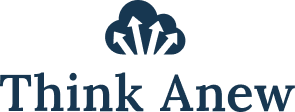Critical Thinking - the Best Antidote to Disinformation
“Olesya,” in her online video, told us she works in a Ukrainian troll farm asked by the CIA to make videos supporting President Biden in the 2024 election. Olesya’s Slavic voice was computer-generated and the video, according to U.S. intelligence analysts, is part of Russia’s disinformation campaign to sway American voters against Biden by acting as if the CIA is behind efforts to stop Trump. The video has been debunked as fake.
Debunking disinformation is too slow, often taking days by which time it’s been shared and sometimes, as its perpetrators hope, gone viral. The private sector’s online fact-checking efforts are too poorly staffed and wary of being criticized for impinging on free speech. The federal government faces similar hurdles. The Department of Homeland Security’s Disinformation Governance Board, designed to coordinate efforts to prevent fake news related to disasters, was shut down after three weeks due to Republican opposition.
As a result increased attention has been given to prebunking. Prebunking acknowledges that disinformation can spread virally so inoculating against it, as against any virus, is the best protection. Prebunking assumes that teaching people how to spot and critically assess disinformation will develop their “antibodies” to prevent infection by fake news.
Some prebunking efforts are computer games. In Bad News, users are asked to purposely create fake news and gain followers for it. In Harmony Square, users takes on the role of Chief Disinformation Officer and try using disinformation to foment polarization among members of the “Harmony Square” community. Evidence suggests such games can help users spot disinformation techniques and become more resistant to them, but it’s not clear that the effects are large or lasting.
Videos have also been used. Cambridge University, allied with Google, showed 90-second videos on YouTube to millions of Europeans to help inoculate them against disinformation techniques such as emotional language, scapegoating, false dichotomies and fear mongering. Research showed that users’ ability to spot these techniques at a later date improved, but not by much.
Teaching media literacy is another approach. California, Delaware, Illinois, New Jersey and Texas have laws mandating it. Many other states have media literacy efforts though the teaching of these skills is uneven, according to a RAND study. The Poynter Institute, a non-profit journalism school, also offers media literacy training.
Voting disinformation is particularly troubling. Some states are addressing it. Michigan’s Secretary of State has established “voter confidence councils” of local community leaders. Their job is to dispense accurate voting information to help “inoculate” citizens against disinformation. Pennsylvania has a website of common election myths. The Civic Listening Corps is a network of volunteers trained to monitor and evaluate misinformation on voting and other topics. Volunteers participate in “civic listening shifts” to identify and report disinformation in their communities.
Print materials are also available that describe and teach pre-bunking techniques. Google offers “A Practical Guide to Prebunking Misinformation” that can be downloaded from its website.
The goal of such efforts is to improve the critical thinking skills people apply to what they read, see and hear. Whether games, videos, written materials and other efforts can match the flood, speed and sophistication of both foreign and domestic disinformation efforts is doubtful in the near-term. Also, in the current environment, government action and resources are limited by political polarization. Yet individual citizens can take some steps to protect themselves.
https://www.snopes.com/fact-check/marjorie-taylor-greene-mask-photo/
On June 3, 2024 this photo of Rep. Marjorie Taylor Greene was posted by Lakota_man on X with the caption: “So, attacking Dr. Fauci and criticizing vaccines and mask efficacy, then WEARING a mask in public is the very definition of Republican HYPOCRISY. Who here agrees?” Within days it received over 12,000 “Likes” and over 875 “Comments;” many were caustic attacks on Greene. It took until the next afternoon for Snopes.com to post a fact-check debunking the post. The photo was taken in 2021 when TSA still required face masks in airports.
Those who “liked” this post (and those they shared it with) could have used some simple steps to avoid being taken in by it.
· Watch out for emotional appeals: the tone of the post, including the use of CAPS is aimed at angering readers. Calming down before succumbing to emotional language helps. Beware before you share
· Check the source: “Lakota-man” has many other posts attacking Greene and other Republicans and is clearly not a credentialed or unbiased reporter.
· Try to confirm the post: No other news sources report this “story” as verified fact. That should lead to suspicion that it is untrue.
· Use fact-checking websites: A check on Snopes.com would reveal the facts of this three-year-old photo.
· Use reverse imaging: Using GoogleImages, you can upload the photo and find out where it came from. Doing that would also take you to the Snopes.com fact-check.
These steps do not exhaust actions we can take. Decades ago, Eleanor Roosevelt reminded us that: “In a democracy, no one else does our thinking for us.” Our critical thinking is the best – and may be the only – tool that can reliably protect us against disinformation.
(If you do not currently subscribe to thinkanew.org and wish to receive future posts, send an email with the word SUBSCRIBE to responsibleleadr@gmail.com)
Photo Credits: tumisu@pixabay.com







